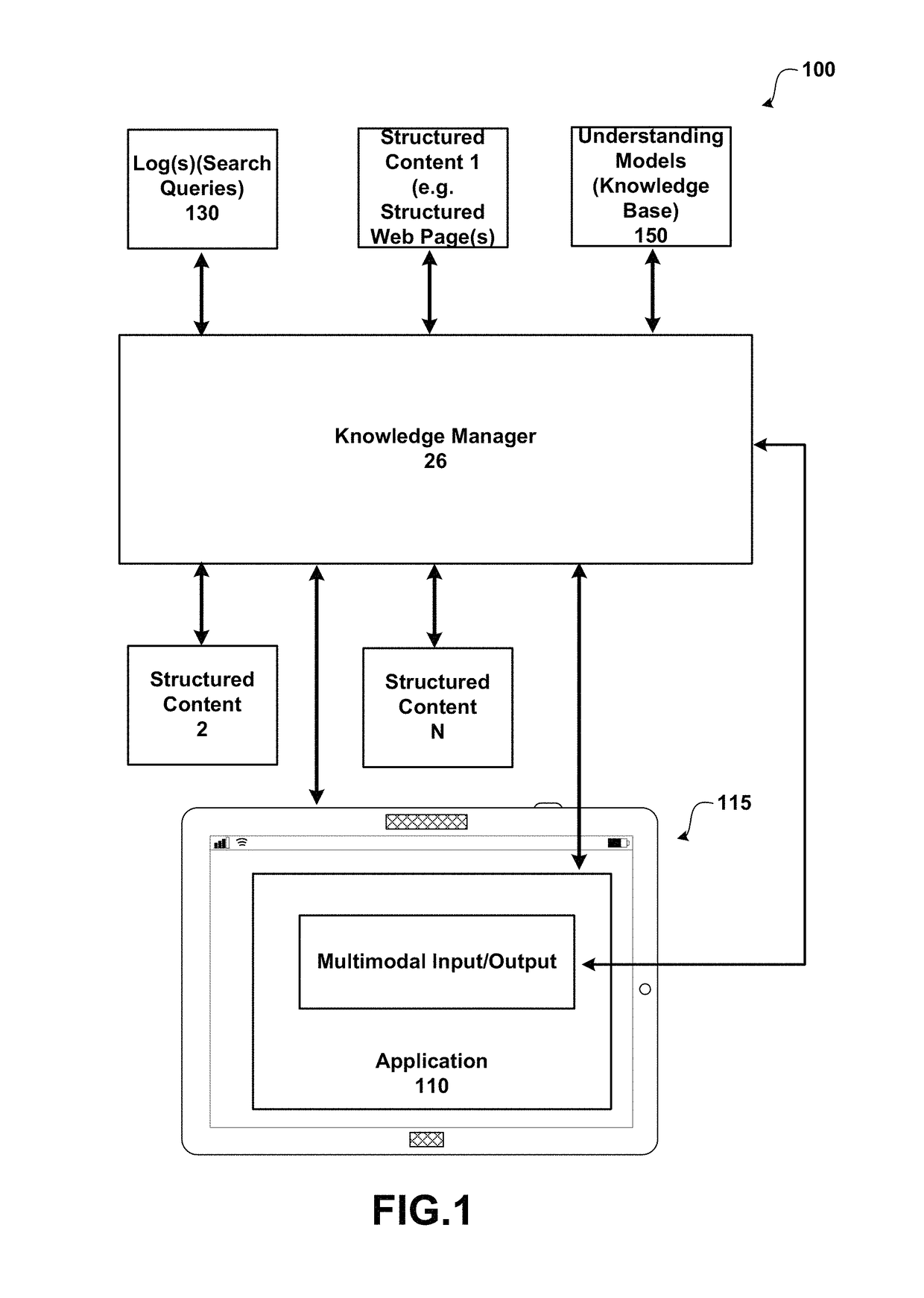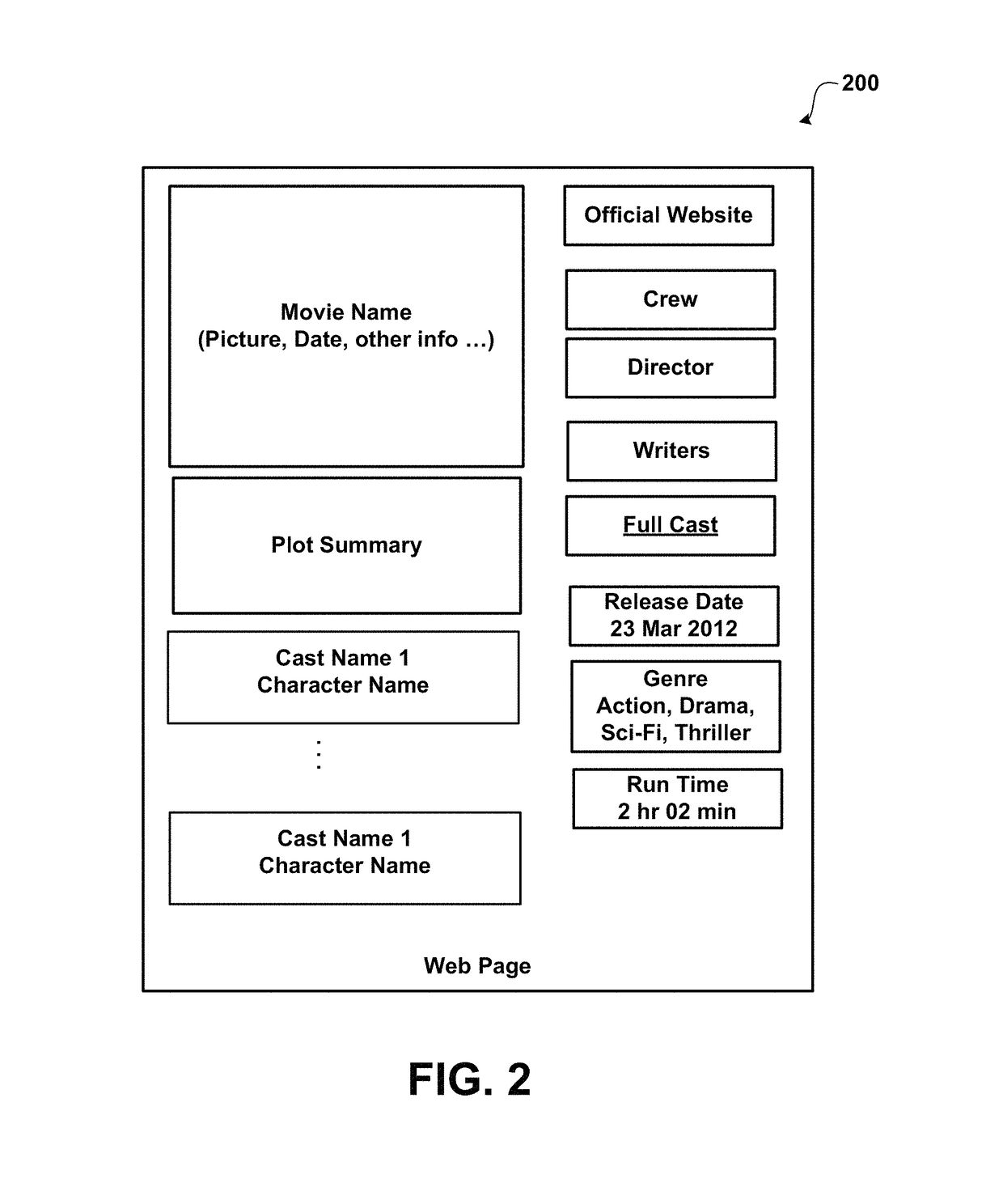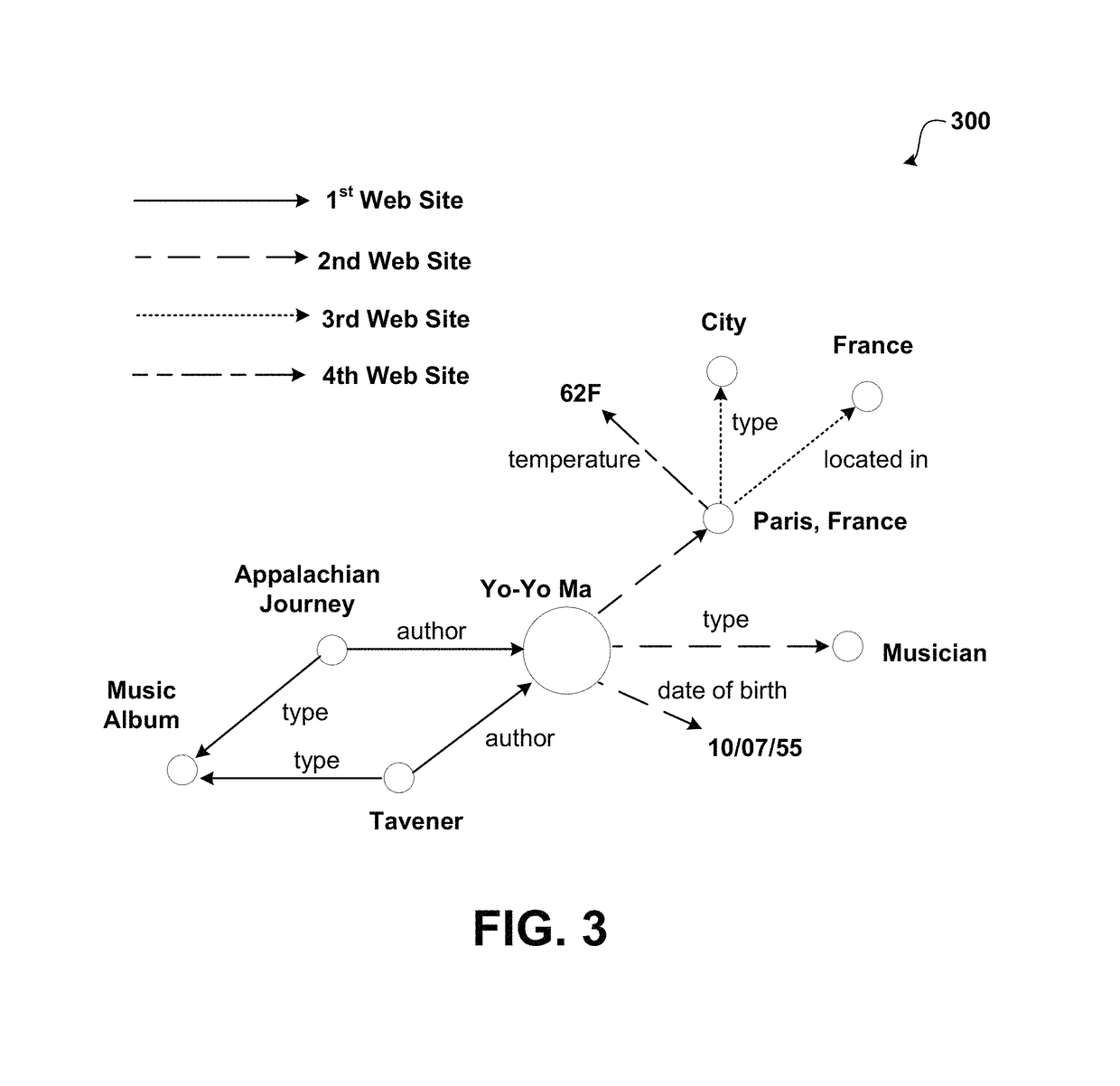Exploiting structured content for unsupervised natural language semantic parsing
a structured content and natural language technology, applied in the field of exploratory structured content for unsupervised natural language semantic parsing, can solve the problems of large amount of experts, difficult parsing natural language input and determining a grammar for conversational systems that defines structural rules, and difficult scaling
- Summary
- Abstract
- Description
- Claims
- Application Information
AI Technical Summary
Benefits of technology
Problems solved by technology
Method used
Image
Examples
Embodiment Construction
[0010]Referring now to the drawings, in which like numerals represent like elements, various embodiment will be described.
[0011]FIG. 1 shows a system for using the semantic web for unsupervised natural language semantic parsing. As illustrated, system 100 includes knowledge manager 26, log(s)(search queries) 130, understanding model(s) 150, structured content 1-N, application 110 and touch screen input device / display 115.
[0012]In order to facilitate communication with the knowledge manager 26, one or more callback routines, may be implemented. According to one embodiment, application program 110 is a multimodal application that is configured to receive speech input and input from a touch-sensitive input device 115 and / or other input devices. For example, voice input, keyboard input (e.g. a physical keyboard and / or SIP), video based input, and the like. Application program 110 may also provide multimodal output (e.g. speech, graphics, vibrations, sounds, . . . ). Knowledge manager 26...
PUM
 Login to View More
Login to View More Abstract
Description
Claims
Application Information
 Login to View More
Login to View More - R&D
- Intellectual Property
- Life Sciences
- Materials
- Tech Scout
- Unparalleled Data Quality
- Higher Quality Content
- 60% Fewer Hallucinations
Browse by: Latest US Patents, China's latest patents, Technical Efficacy Thesaurus, Application Domain, Technology Topic, Popular Technical Reports.
© 2025 PatSnap. All rights reserved.Legal|Privacy policy|Modern Slavery Act Transparency Statement|Sitemap|About US| Contact US: help@patsnap.com



